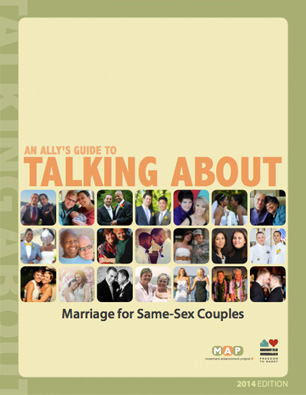The Bottom Line
Public support for allowing same-sex couples to marry is growing significantly, with national polls now consistently showing that a majority of Americans support the freedom to marry. This surge in support has followed years of important public and one-on-one conversations about marriage and same-sex couples—conversations that have helped move people away from being undecided on an “issue” and toward being supportive of marriage for loving, committed couples.
Among the building blocks for those conversations: a focus on the core values that embody marriage for same-sex and opposite-sex couples alike; helping people recognize that they wouldn’t want to deny others that indispensible chance at love and commitment in marriage; reminding people of how our shared beliefs—including treating others as we want to be treated, freedom, and not judging others—are at the heart of people’s journeys toward support; and sharing stories that allow people to see and embrace their own journey toward supporting the freedom to marry.
An Ally’s Guide to Talking About Marriage for Same-Sex Couples, updated for 2014 by Freedom to Marry and MAP, provides a comprehensive overview of these and other approaches for expanding the kinds of authentic, effective marriage conversations that are helping to build lasting support across geographic boundaries, political parties, generations and faith traditions.
An Ally's Guide to Talking About Marriage for Same-Sex Couples (2014)Download
Recommended citation:
Movement Advancement Project and Freedom to Marry. April 2014. "An Ally's Guide to Talking About Marriage for Same-Sex Couples." MAP's
Talking About LGBT Issues Series.
https://www.lgbtmap.org/allys-guide-talking-about-marriage (date of access).


